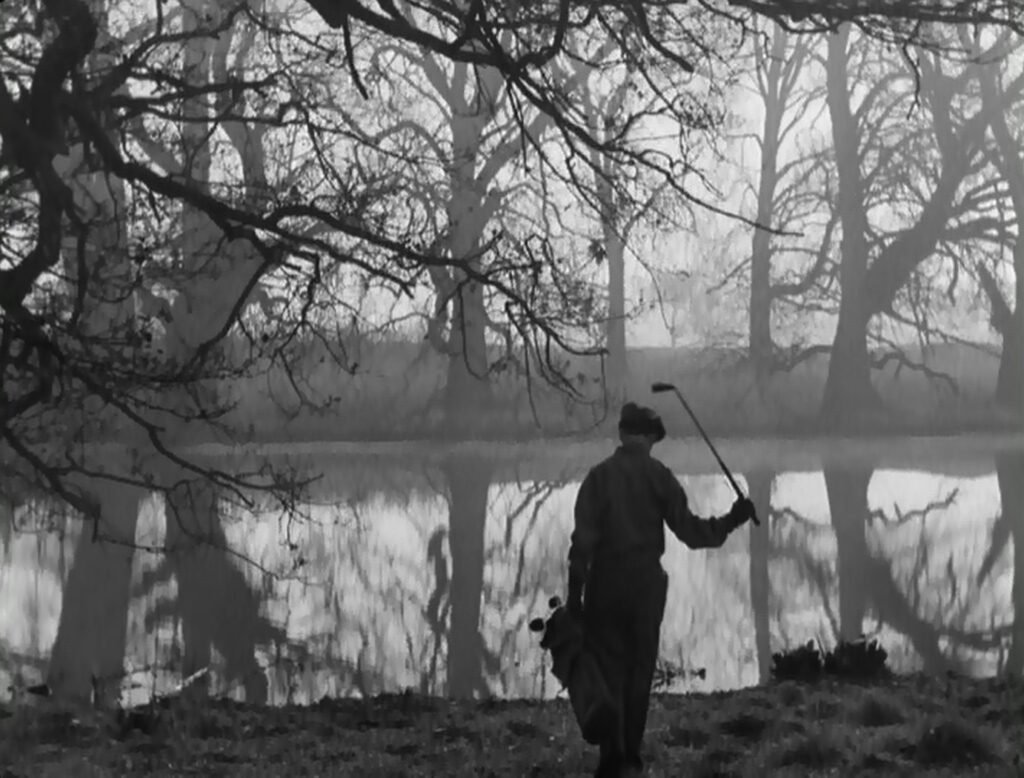
Dead of Night
1945, directed by Alberto Cavalcanti, Charles Crighton, Basil Dearden, & Robert Hamer
Dead of Night ends with a twist when architect Walter Craig wakes up and drives out to the same manor house in Kent where his recent nightmare began. The whole movie is therefore a loop in time, and the horror is ready to start all over again. But there’s another twist when Mr. Craig tells his wife he’s going to “Pilgrim’s Farm”. A British audience would instantly connect the idea of pilgrims in Kent to Geoffrey Chaucer’s Canterbury Tales, in which Kent-bound pilgrims exchange tales with delightful twists. Dead of Night is thus a modern variant of Chaucer’s literary work.
The homage to Chaucer’s revered classic is not just a casual afterthought. Dead of Night was released on the 9th of September in 1945, and with memories of World War II still fresh there was good reason to remind the British of their common heritage. The movie displays a typically British humor, and the stars of the golfing story, Basil Radford and Naunton Wayne, had appeared together in The Lady Vanishes and four subsequent films as symbols of the indefatigable British spirit. The five eerie tales and their framing story show off a spectrum of typically British social classes, livelihoods, and personality types.
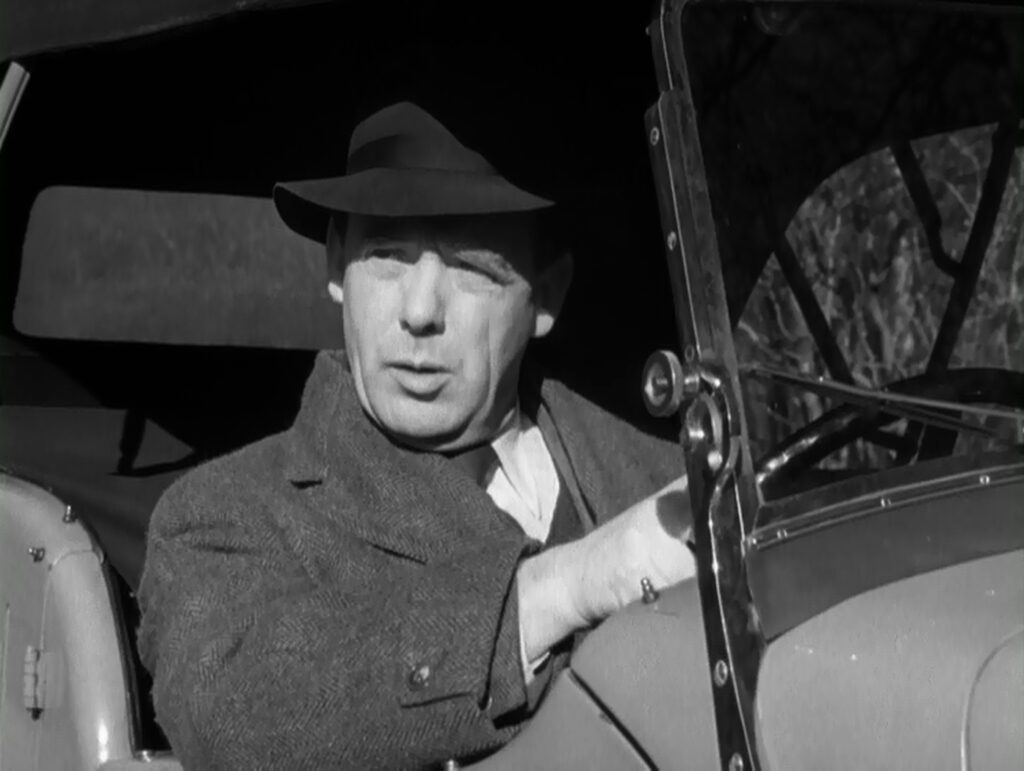
In this light it might be tempting to think of Dead of Night as a nostalgic portrait of England, a throwback to better times before the war. If its writers had wanted to remind people of their trauma, wouldn’t the first tale have been about a wounded soldier instead of a racecar driver? On the contrary, the pervasive sense of dread was an indirect but more effective way to confront audiences with their recent fears.
Each of the six stories is about something which was gone that comes back. The hearse driver goes away and comes back as a bus conductor; the murdered boy in the Somerset mansion comes back as a ghost; the mirror’s previous owner comes back to haunt its new owner; the cheated golfer comes back from the dead; and the crushed dummy is reincarnated in the soul of the mad ventriloquist. In the framing story Walter Craig’s dream keeps coming back to haunt him, apparently without end. The notion of the past coming back into the present was no joke when Dead of Night was released. Britain had just come through a terrifying war. Soldiers were killed, cities were bombed, and everyone had suffered five years of fear and deprivation. The war itself was like a repeat of World War I, the so-called “war to end all wars”, and the idea that it might happen yet again makes the time loop at the end of Dead of Night seriously frightening.
One might think that a nightmare about the past recurring was the last thing people wanted, but Dead of Night did well at the box office, and the fact that it hits such a tender spot is precisely the point. Each tale is a kind of therapy for a particular wartime trauma affecting the British people:
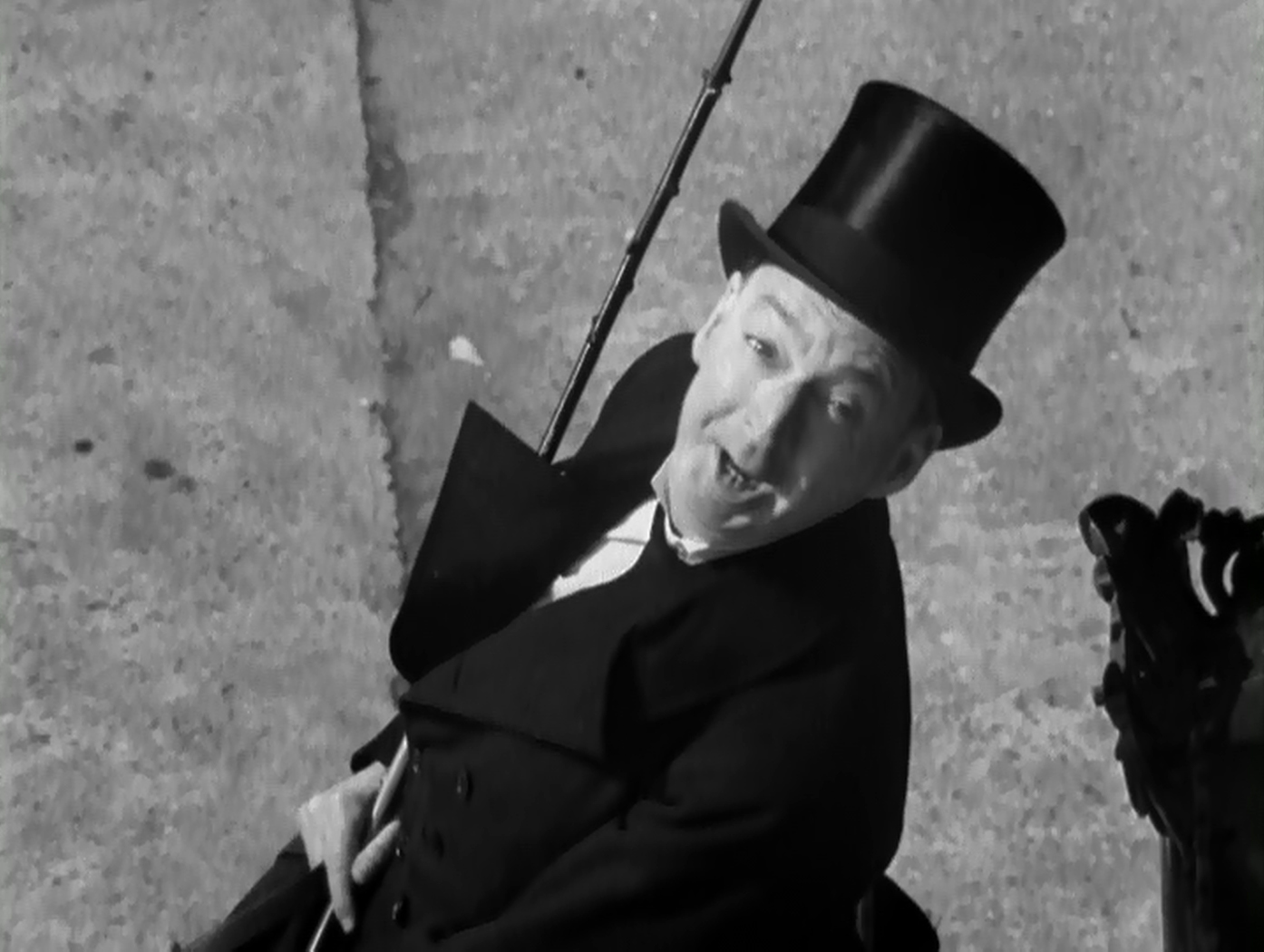
- “The Hearse Driver” is about a man who escapes death in a racecar accident then escapes death again when he heeds a warning to stay off a doomed bus. Countless soldiers and civilians were still reeling from close brushes with death, and this story puts their experience in a more cozy light, as if they were somehow protected by fate. The leading character emerges happy, well adjusted, and married to the nurse he’s been flirting with.
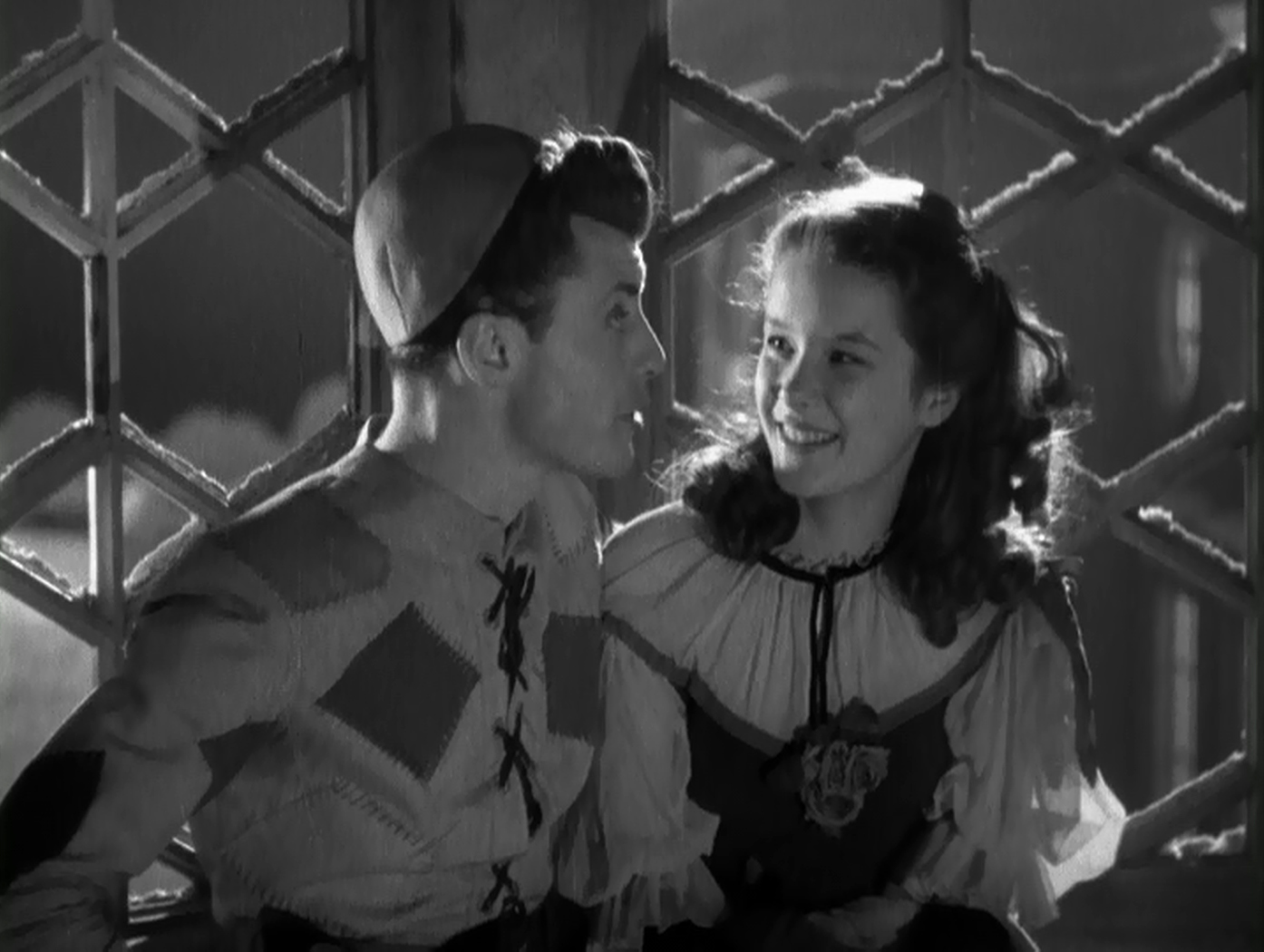
- “The Christmas Party” is about a girl who discovers that she unknowingly gave comfort to the ghost of a murdered little boy. Her shock approximates what people might have felt when a neighbor or a comrade in arms was suddenly killed by bombs or armaments. The festive holiday setting reminds people that life goes on, that there’s no reason to cease the joys of life after close encounters with death.
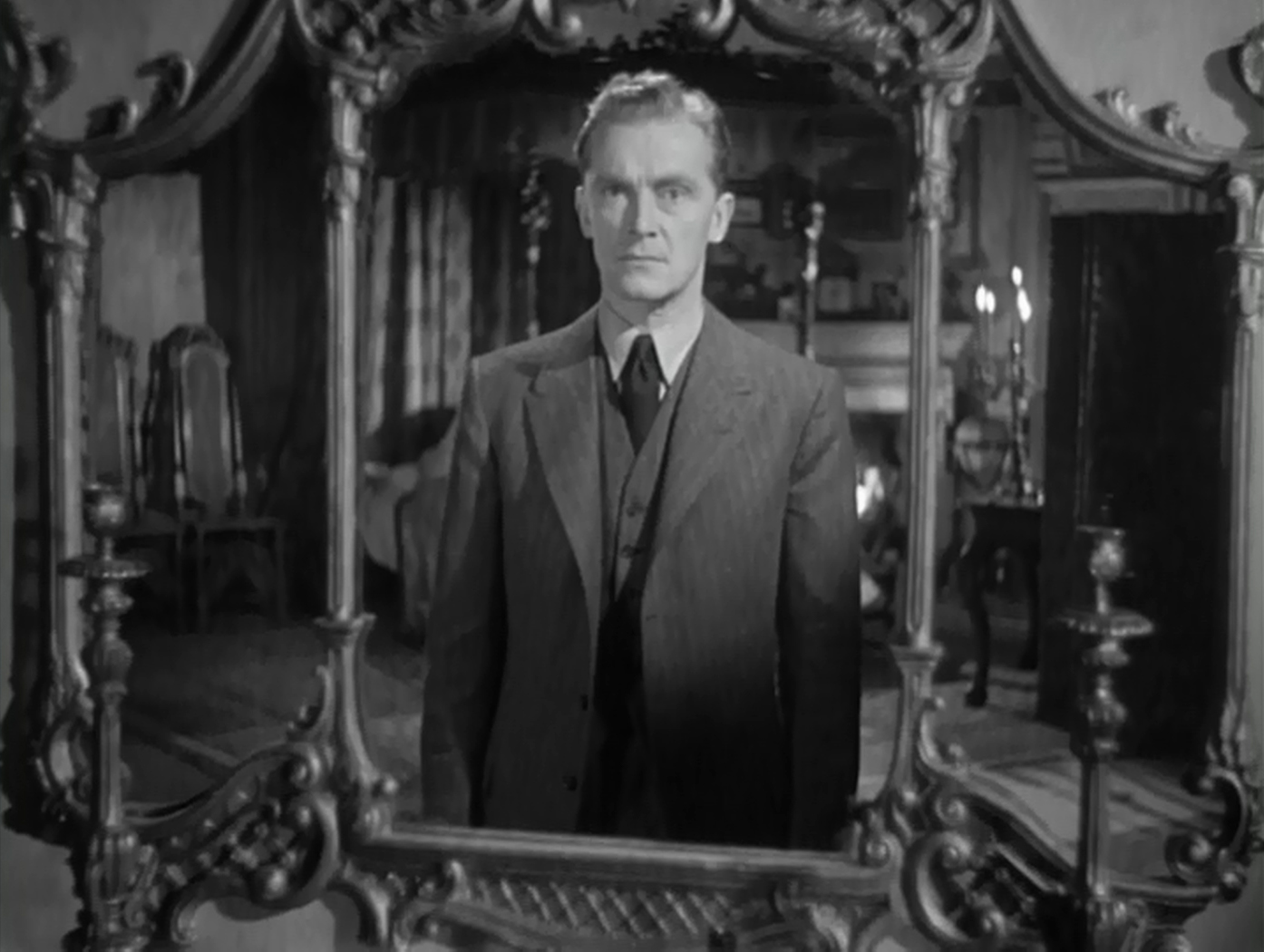
- “The Haunted Mirror” is about a man whose life is taken over by the past. Most people were still haunted by the war, each obsessed with the past in some way. Smashing the mirror banishes the past, but only after a long period of confronting it, staring into the past for endless hours. The story is reassuring because it tells us that the horrors of the past have a limited pull on us. The past is like someone else’s life, only tangentially related to our own, and its spell can be broken more easily than we expect.
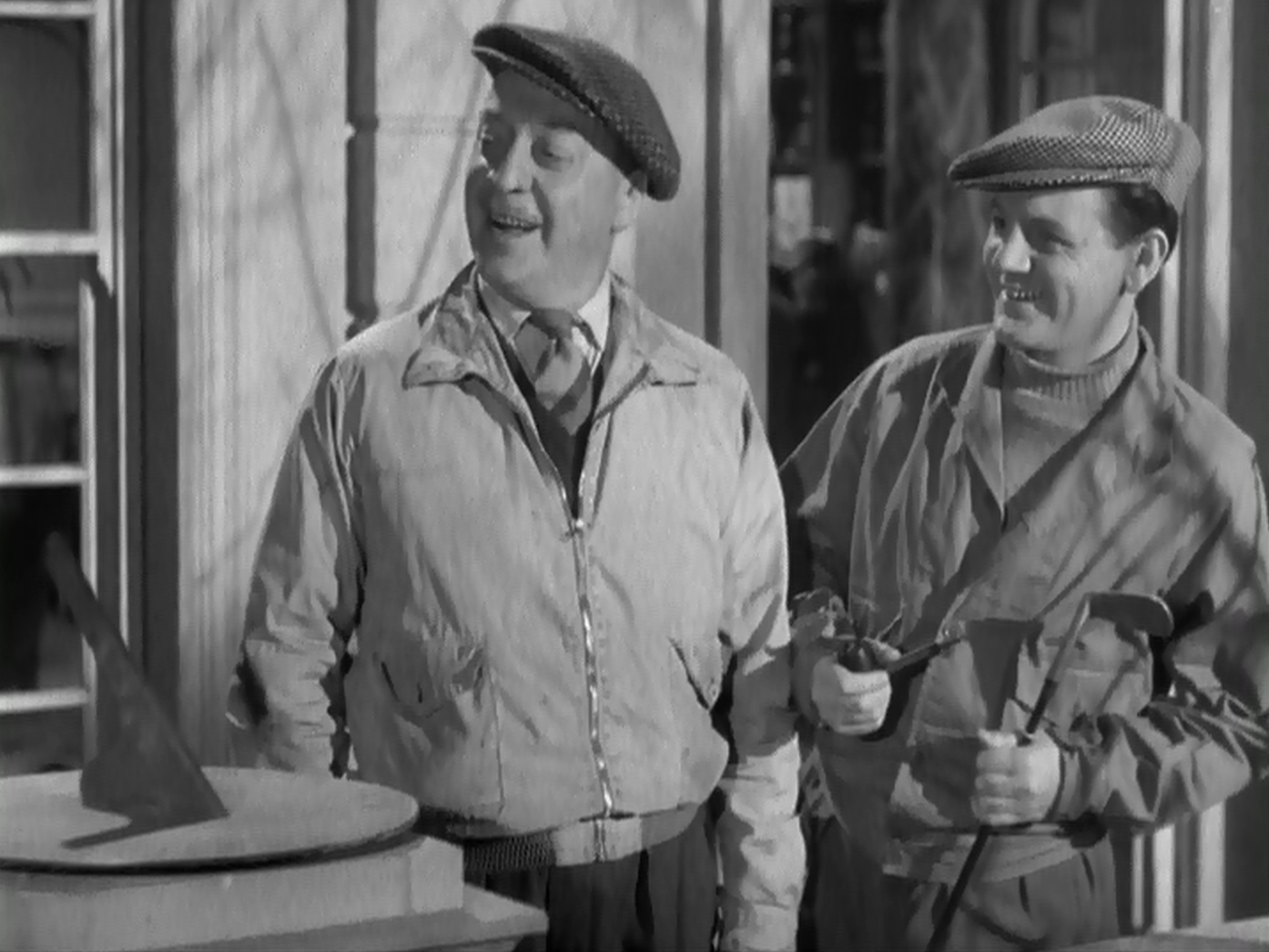
- “The Golfer’s Story” is about an unlucky man whose golfing partner cheats on a bet, stealing the woman promised to him. The story should have cheered up any soldier who lost his sweetheart to a man on the home front, thanks to the clever and humorous way the cheated man wins in the end. Furthermore, the jovial rivalry between the two golfers might have helped to dampen the lingering anger around such a sore subject.
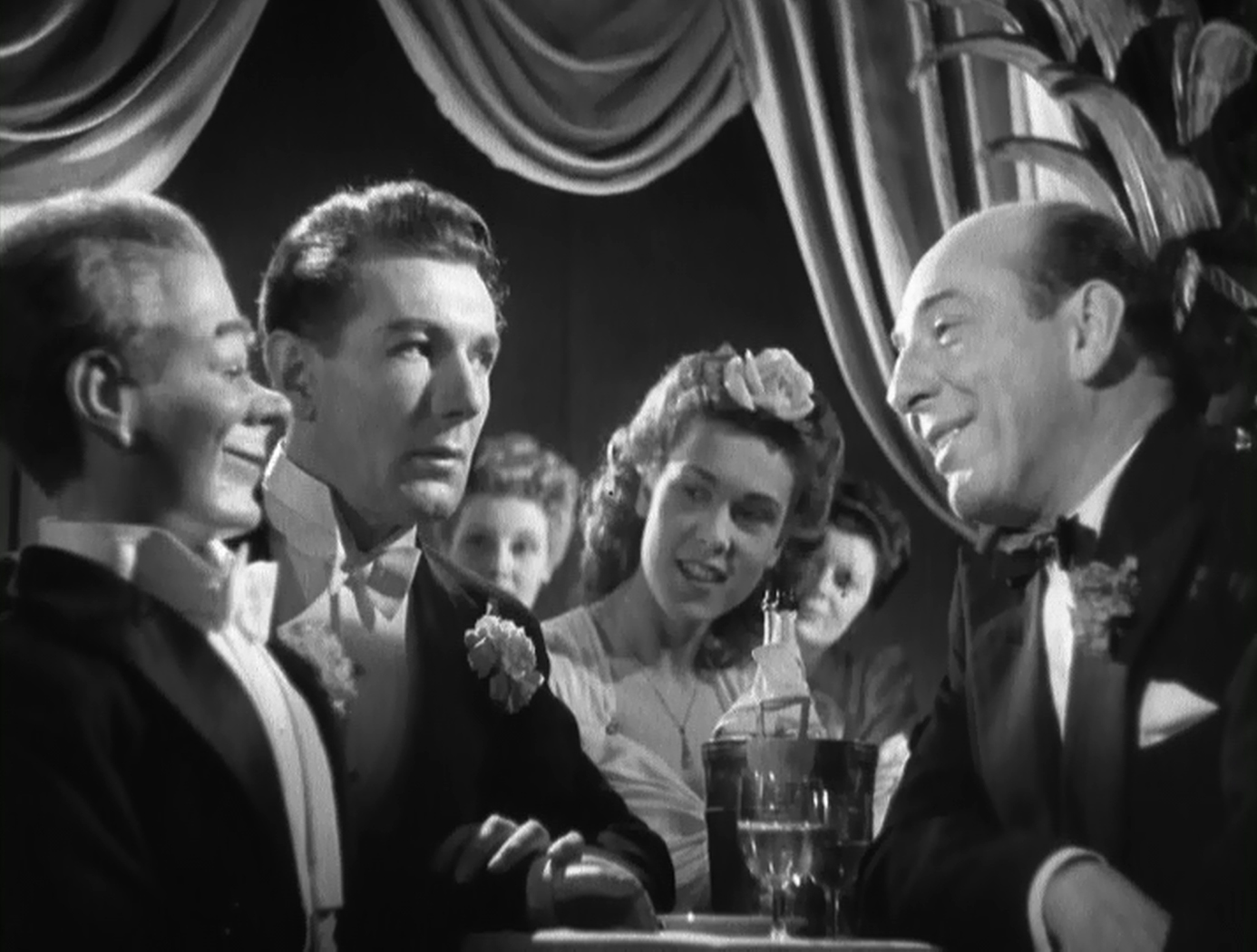
- “The Ventriloquist’s Dummy” is the showpiece, a story of a split personality. Anyone who’s fought a war may feel torn between a normal self and a painful dark side. The story brings that predicament down to earth, and most soldiers could tell themselves they’ve handled their internal rifts with more sanity and grace than Maxwell Frere. The episode also aims to soothe the nation’s wounded pride. The rival ventriloquists are an Englishman (Frere) and an American (Sylvester Kee), and the American wins in the end, just as the United States had supplanted Britain as the dominant world power. Their rivalry plays out at Beulah’s nightclub in Paris, echoing the fact that British and Americans had fought side by side in France under an American supreme command (Like Eisenhower, Beulah is American). The sequence’s comic perspective should have taken some of the sting out of Britain’s diminished status.
The presence of two psychiatrists in Dead of Night foregrounds the movie’s therapeutic role. One of them has a minor part in “The Hearse Driver”, but Dr. Van Straaten is a major presence in both the framing story and “The Ventriloquist’s Dummy”. His physique, facial features, eyeglasses, and gestures recall Werner Krauss as Dr. Caligari, and his Dutch name makes him Germanic without being German. Like Caligari, Van Straaten is ambiguous – he could be either sinister or benign.
Just as psychoanalysis looks backward and forward at the same time, making sense of the past to improve the patient’s future, Dead of Night alternates between modern and antique settings. The hospital in the first episode and the nightclub in the last are modern; the country villa and the 18th century clubhouse in the second and fourth are traditional; and in the middle story modern and antique face off across a mirror, giving the film a careful symmetry. With its cyclical view of time, the framing story blurs the line between past and future. Moreover, the manor house is traditional, but Walter Craig is there to build a new wing. All of this fits the film’s therapeutic purpose, helping the audience to move forward through life, reconciled to a troubled past.
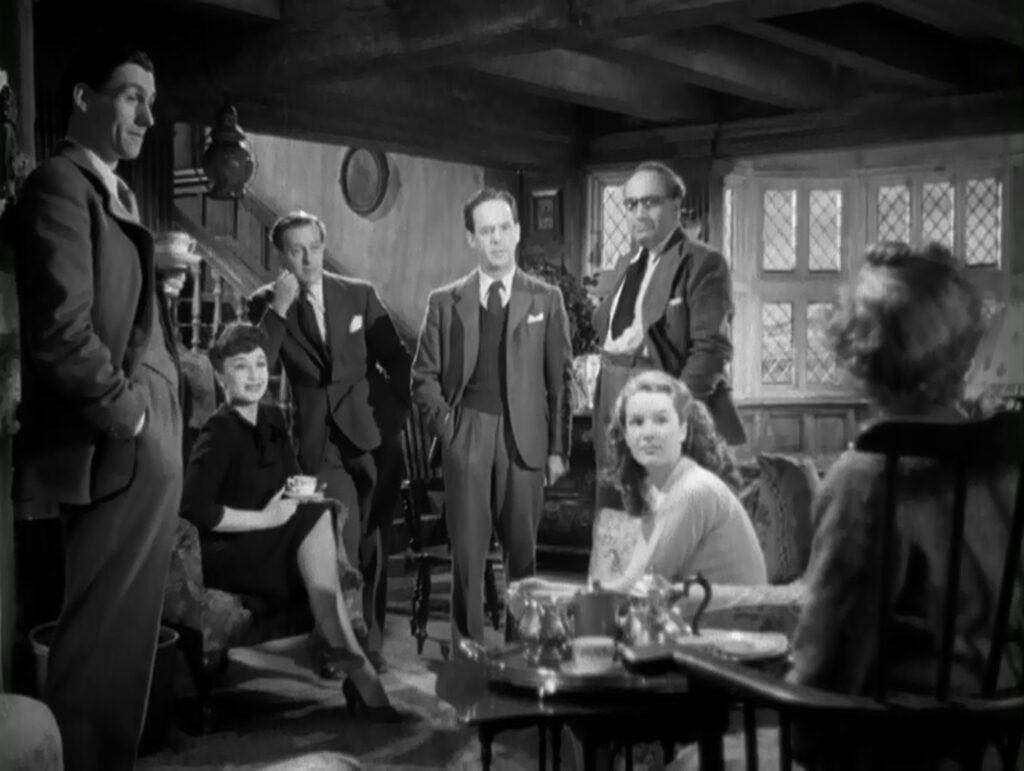
World War II had forced the British to bind together in uncomfortable ways: taking shelter in subways, sharing living space, fighting in the army, sharing rationed food. After the war, people understandably wished to be done with shared sacrifice and look after their own interests. Each of the stories in Dead of Night reminds viewers that they must continue to stick together even in peacetime. “The Hearse Driver” warns that a vehicle with “just room for one inside” – whether a racecar or an overcrowded bus – is a harbinger of death. In “The Christmas Party” Sally encounters death because she’s avoiding the crowd downstairs. “The Haunted Mirror” is about a man secretly afraid of marriage who comes to accept it. “The Golfing Story” is about two men who can’t make room for a woman between them. “The Ventriloquist’s Dummy” is about a man driven mad by possessiveness. The framing story climaxes in a blackout… during the war blackouts were occasions for bonding, but in this blackout Mr. Craig sends everyone out of the room so he can be alone with Van Straaten and murder him. In keeping with the movie’s therapeutic aims, each story upholds the value of togetherness.
As chilling as the ending may be, it’s ambiguous because Craig could theoretically break the cycle of horror. Like Britain itself, he faces a choice. He can repeat the story of horror and murder, he can run away and be a coward, or he can stay and do the work Eliot Foley hired him for. The old half-timbered cottage with its medley of characters is a microcosm of England, and Craig’s job is to expand the house by adding two bedrooms. The best scenario for Britain’s future is to grow peacefully so that everyone can live together.
CONNECTIONS:
The Cabinet of Dr. Caligari – Framing story; bespectacled doctor with ambiguous motives; somnambulist/dummy; the name “Francis” linked to a psychological past or actual past events
The Lady Vanishes – Comic duo of Basil Radford and Naunton Wayne representing the British spirit
Green for Danger – Therapy for lingering trauma in post-WWII Britain
Psycho – Split personality taken over by his stronger half
Italian for Beginners – Story about the value and benefits of togetherness